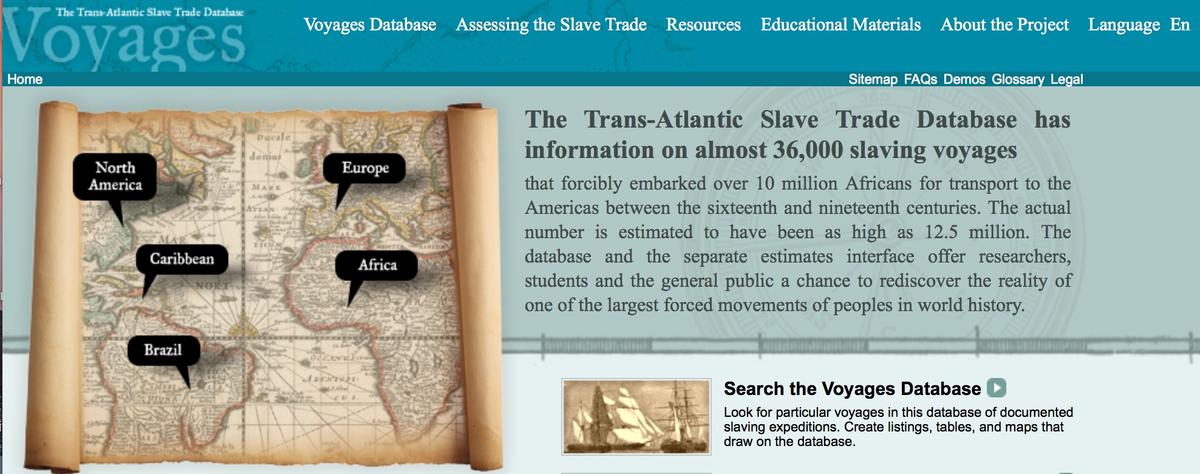The Liberated Africans Project
Created and maintained by Henry B. Lovejoy, Richard P. Anderson, Daniela Cavalheiro, David Eltis, Suzanne Schwarz, and Daryle Williams. http://www.liberatedafricans.org/overview.html.
Reviewed Jan. 2017.
Marco Basile, JD/PhD Harvard University
From 1807 to the 1860s, Britain led an international legal effort to suppress the Atlantic slave trade, largely by securing treaties that authorized its navy to capture slave ships from other countries. The Royal Navy patrolled for slave ships and brought captured ships for trial to either Britain’s general maritime courts or a series of international slave trade courts established with other Atlantic powers under the treaties. Histories of the international legal suppression of the Atlantic slave trade tend to focus on the courts and the naval patrols. An enduring challenge remains to tell the history of the individuals, perhaps numbering as many as 200,000, who were released from slavery aboard the ships and resettled across Britain’s colonies.
The Liberated Africans Project is an online collection of records from the courts that holds great promise to help historians confront this challenge. The website is organized around the courts at Cuba, Brazil, and Sierra Leone. Under a “Cases” tab for each court, users can find the court’s cases listed by slave ship. Only cases that resulted in the successful condemnation of the slave ship are included. For most cases, the website provides a set of original records: a report on the legality of the capture, a declaration provided by the naval officer responsible for the capture, a list of evidence, the sentence, an expense report, and the register of the Africans liberated as a result of the trial.
Those records were generated by the courts, and they reflect the perspectives of the men from Britain and other Atlantic countries who made up the courts or served in the naval patrols. In some ways, the columns and rows of the registers memorializing the liberated Africans actually perpetuate, rather than undermine, the logic of the slave trade. For example, the registers’ categories—including “Number,” “Age,” “Height,” and a physical description—invoke the very categories used by slave traders in treating humans as commodities.
A challenge for users of the website is to read against the grain of these sources to piece together patterns from which inferences can be made about the lives that the data can only ever imperfectly approximate. The website facilitates that task with demographic analyses by court related to gender, age, ethnicity, mortality, and place of resettlement. From that information, users can glean striking ironies about the international suppression regime, including that liberated individuals were largely redirected to British colonies, where they were resettled as indentured laborers, rather than ever returning home again.


